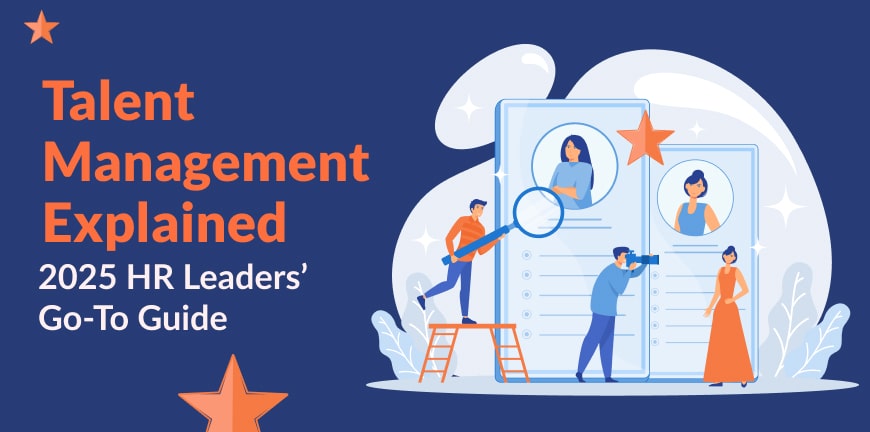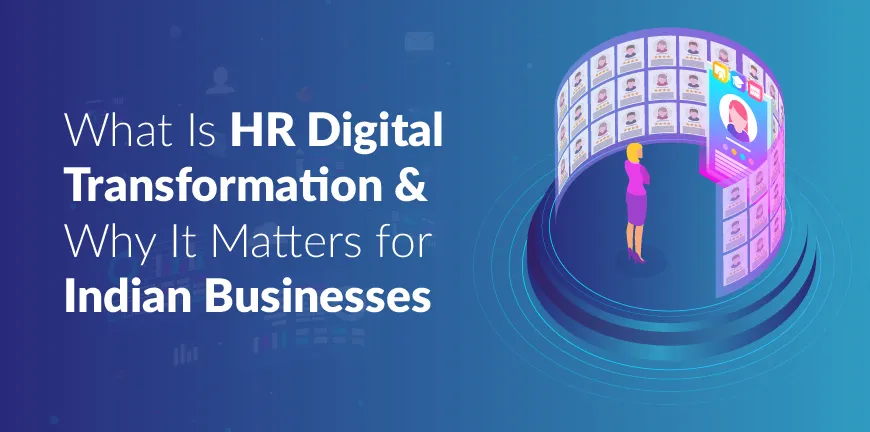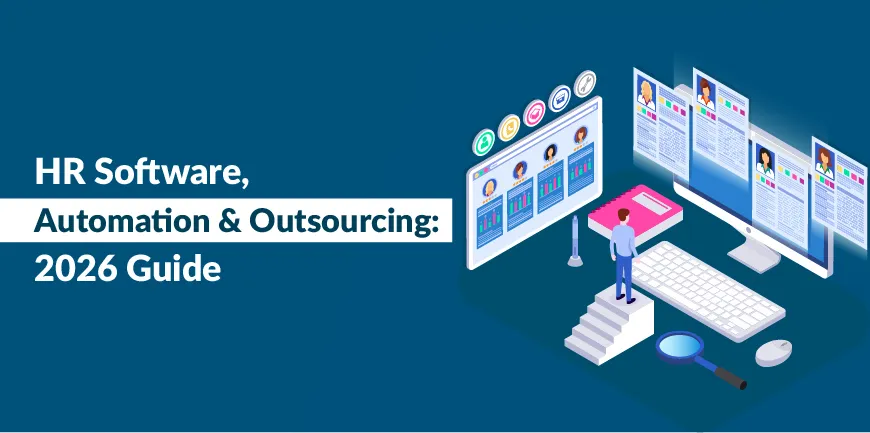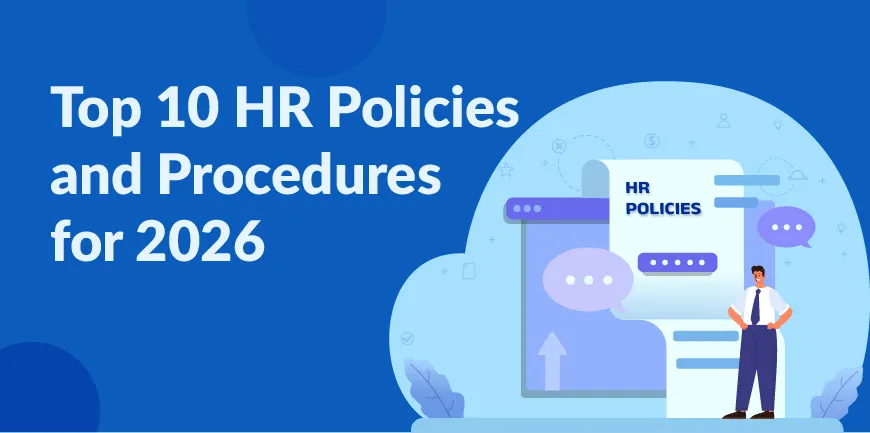
What is Staffing? The Ultimate Guide for Businesses (2025)
20/08/2025
What Is the Global Talent Shortage? Causes, Impact & Solutions
25/08/2025- What is Talent Management?
- What does talent management mean in HRM?
- How it differs from HR and talent acquisition?
- Why Talent Management Drives Business Success in 2025
- Essential Components of Effective Talent Management
- The Talent Management Process Explained
- Building Your Talent Management Strategy
- Business Impact of Effective Talent Management Systems
- Modern Talent Management Challenges That Business Leaders Face
- Technology Solutions That Drive Talent Success
- Talent Management Models
- Talent Management Objectives That Drive Business Success
- Why Talent Management Drives Modern HRM Success
- Employee Retention Strategies That Work
- Future of Talent Management in HR
- Business Results from Strategic Talent Management
- Conclusion
- Key Takeaways
- Frequently Asked Questions (FAQs)
“It doesn’t make sense to hire smart people and tell them what to do; we hire smart people so they can tell us what to do.”: Steve Jobs (Apple).
Why is talent management the most intriguing facet of business? No matter how technology advances or how operations get automated, nurturing & retaining talent is still the most human-intensive task within an organization. “A one-size-fits-all” approach will not suffice in talent management in HRM; rather, a multifaceted cumulative methodology is the need of the hour. Let’s take a deep dive into the world of talent management and understand all its nuances through this comprehensive guide, from definition to the future of talent management. Go!
What is Talent Management?
Understanding talent management provides the foundation for building sustainable workforce strategies. Also, business leaders require clear frameworks to optimize their human capital effectively.
Talent management definition
Talent management represents a systematic approach to attract, develop, retain, and motivate skilled employees throughout their entire organizational journey. This strategic investment focuses on your most valuable business asset: your people. Additionally, the process extends beyond traditional HR functions, encompassing all activities necessary to build high-performing workforce aligned with business objectives.
According to McKinsey & Company’s 1997 study, “The War on Talent,” established talent management as a critical business function. Since then, it has developed into a systematic approach that influences every aspect of employee experience.
What does talent management mean in HRM?
Human Resource Management positions talent management as a strategic business component rather than an administrative function. This approach creates stable, dynamic workforces that operate within your organization’s value system while addressing skill gaps systematically.
Here are 5 core areas that talent management mainly focuses on:
- Aligning employee development with business objectives.
- Design training and career growth programs.
- Creating effective performance management systems.
- Implementing succession planning for leadership continuity.
- Building retention strategies that reduce turnover.
Traditional HR activities often operate tactically, while talent management functions strategically, typically guided by senior leadership, including the Chief People Officer. Also, success requires integration across various HR processes rather than isolated program implementation.
How it differs from HR and talent acquisition?
Talent management operates distinctly from both general HR and talent acquisition functions. Talent acquisition focuses on finding and hiring suitable candidates, while talent management develops and retains those people systematically.
Talent acquisition typically responds to immediate needs, whereas talent management operates proactively with an internal focus. Talent acquisition addresses short to medium-term staffing requirements, while talent management takes long-term perspectives on performance, growth, and organizational readiness.
In external recruitment, general HR manages all employee-related administrative functions, policies, and procedures. Talent management specifically drives strategic employee development that enhances organizational performance. Also, HR provides the operational foundation that enables effective talent management to flourish, making them complementary business functions.
Why Talent Management Drives Business Success in 2025
Talent management has become a strategic business requirement that directly impacts organizational performance and market positioning. Also, Companies that prioritize talent management consistently deliver superior results, making it essential for business sustainability and competitive advantage. Here are 5 ways talent management drives business success in 2025.
1. Financial Impact on Business Performance
Organizations that align talent management with business strategy perform better than those operating without this alignment. Companies with integrated talent management programs achieve even better results and greater returns. These financial outcomes reflect the strategic value of treating talent as a core business asset rather than an operational expense.
2. Evidence-based decision making
Work has shifted from physical presence to performance outcomes, creating new challenges for attracting and retaining skilled professionals across all business sectors. During economic uncertainty, robust talent management provides organizational stability through proactive rather than reactive approaches.
3. Employee Engagement and Workforce Stability
Companies with effective training programs report 53% lower attrition rates, directly reducing hiring costs while boosting productivity. Organizations are implementing targeted strategies for 2025:
- Mental health support expansion (61% of companies)
- Social connection opportunities (58% of companies)
- Stress management and resilience programs (50% of companies)]
4. Career development
Strong onboarding processes improve new hire retention by 82% and increase early productivity by more than 70%. Companies investing in career development see employees staying longer, highlighting the retention power of growth-focused talent strategies.
5. Performance and Competitive Advantage
Diverse companies outperform competitors by 33%, according to McKinsey research. Additionally, effective talent management drives productivity improvements, with 94% of employers reporting maintained or increased productivity after remote work transitions.
The business case for employee satisfaction directly correlates with reduced turnover and higher engagement. Engaged teams generate higher productivity and profitability, leading HR departments to design talent management strategies that balance performance requirements with employee experience quality.
Essential Components of Effective Talent Management
Successful talent management operates through five core components that work together systematically. These elements create the foundation for building and maintaining high-performing teams aligned with business objectives. The 5 core components that contribute towards effective talent management include:
1. Workforce planning
Workforce planning involves analyzing current capabilities and forecasting future talent requirements to ensure your organization has skilled people in the right positions at the right time. This process starts with understanding your existing workforce, projecting changes through natural attrition, and identifying upcoming staffing needs. Also, Strategic workforce planning enables businesses to address skill gaps before they impact operations, supporting long-term organizational objectives.
2. Talent acquisition and onboarding
Once workforce requirements are clear, talent acquisition focuses on finding and hiring qualified candidates who align with company objectives. Strong onboarding processes prove equally important for long-term success. Moreover, organizations with effective onboarding improve new hire retention by 82% and boost early productivity by more than 70%. Well-designed onboarding helps new employees understand their roles while experiencing the company culture as presented during recruitment.
3. Learning and development
Learning and development programs provide employees with opportunities to expand their capabilities and become valuable organizational assets. These initiatives include training programs, coaching sessions, certifications, and e-learning platforms, often supported by dedicated time and budget allocations. Also, employers who invest strategically in employee development retain their workforce at twice the rate of those who don’t.
4. Performance management
Performance management establishes clear success criteria and provides employees with regular feedback on their progress. This component clarifies expectations, creates consistent feedback cycles, recognizes high performers, and addresses performance challenges. Additionally, effective performance management typically involves setting objectives at the start of review periods, conducting regular check-ins, and evaluating results against established targets.
5. Succession planning
Succession planning identifies and develops internal talent that will become available in the future. This process focuses on senior organizational roles, identifying individuals with potential to fill these positions as short-term or long-term successors. Through succession planning, organizations ensure critical positions remain filled by qualified individuals rather than facing extended vacancies or unsuitable appointments.
The Talent Management Process Explained
The talent management process follows a strategic cycle that enables organizations to build skilled workforces aligned with specific business objectives. Understanding how these phases connect provides a practical blueprint for effective talent management implementation.
1. Plan: Identify skill gaps and future needs
Effective talent management starts with understanding where your organization stands today and where it needs to go tomorrow. Also, skill gap analysis identifies the differences between current workforce capabilities and future requirements. This foundation process assesses existing skills, projects future needs based on business goals, and pinpoints specific improvement areas. Moreover, Companies must evaluate both immediate requirements and anticipated future demands driven by technology shifts or market changes. Early gap identification enables targeted strategy development before performance impacts occur.
2. Attract: Build employer brand and source talent
Once talent needs are clear, the focus shifts to attracting suitable candidates. How candidates perceive your organization as a workplace directly impacts recruitment success. Strong employer brands reduce dependency on expensive job advertisements while attracting candidates who naturally align with company culture. Also, developing a compelling Employee Value Proposition (EVP) that answers “Why should someone work here instead of somewhere else?”
Employer brand becomes essential for competitive marketplace differentiation. Moreover, organizations with robust employer brands have improved applicant pool quality.
3. Develop: Upskill and reskill employees
After successful talent acquisition, development becomes the priority. This phase enhances existing skills while building new capabilities to address identified gaps. Effective talent development aligns organizational objectives with employee growth opportunities. Organizations face expanding skills gaps, with 87% of companies acknowledging this challenge worldwide. Development initiatives include training programs, mentoring, coaching, and continuous learning opportunities that prepare employees for current roles and future advancement.
4. Retain: Engage and motivate top performers
Retaining top talent requires deliberate engagement and motivation strategies. About half of businesses find talent retention harder than hiring new employees. Also, 50% of voluntarily exiting employees believed their organization could have prevented their departure.
Additionally, retention strategies should include achievement recognition, competitive compensation, flexible working arrangements, and autonomy opportunities. Employees who feel valued and appreciated remain with organizations longer, often referring to other top performers they know.
5. Transition: Succession and offboarding
The final phase addresses how talent moves within or outside the organization. Succession planning ensures leadership continuity by identifying and developing internal candidates for key positions when they become vacant. This proactive approach minimizes disruption while preserving institutional knowledge.
Also, thoughtful offboarding processes for departing employees provide valuable insights through exit interviews that identify improvement areas. Effective transition management strengthens talent pipelines while respecting natural employee lifecycle patterns.
Building Your Talent Management Strategy
Effective talent management strategies require systematic planning that connects people initiatives directly to business outcomes. Also, your talent approach must support organizational priorities rather than operating as separate HR activities. Here are some proven talent management strategies:
1. Align with business goals
Successful talent management begins with understanding your company’s strategic direction. Review your organization’s primary objectives, whether established through board directives or frameworks. Also, clear alignment enables employees to understand their roles more precisely, creating stronger accountability and improved job performance.
Additionally, determine whether your organization prioritizes customer base expansion, new product launches, or deeper client relationships. Your talent strategy should directly support these goals. Companies focused on market expansion need strong sales team recruitment and development, while innovative-driven organizations require technical talent pipelines.
2. Define clear objectives of talent management
Business-specific objective talent management provides direction for your implementation efforts. Your strategy should address:
- New talent recruitment aligned with growth plans.
- Training programs that build required capabilities.
- Career development pathways for key personnel.
- Onboarding processes that accelerate productivity.
These objectives should reflect your unique business environment and workforce needs, creating a working document that adapts as your company evolves. Use a RACI matrix to establish clear ownership for different implementation aspects.
3. Use data to inform decisions
Data-driven talent decisions deliver better business results than intuition-based approaches. Analytics help identify workforce trends, performance patterns, and improvement opportunities that directly impact your strategic goals.
Focus on collecting strategic HR KPIs, including attrition rates, employee satisfaction scores, and recruitment cycle times. This information reveals specific challenges of talent management, and analyzing unsuccessful recruitment searches often provides valuable insights into market positioning or role requirements.
4. Involving leadership and managers
Leadership commitment has a greater impact on talent management success than any other factor. Business leaders must own and actively use talent strategies to achieve desired results. Additionally, leaders need to demonstrate expected behaviors while addressing inconsistencies with established expectations.
Create a cross-functional talent management team that includes key business leaders alongside HR professionals. This approach ensures business ownership of talent initiatives rather than treating them as solely HR responsibilities.
Business Impact of Effective Talent Management Systems
Companies with strong talent management systems generate measurable business advantages that separate them from competitors. Organizations implementing these systems report concrete improvements across key performance areas. Here are 4 ways talent management systems positively impact businesses:
1. Enhanced Productivity and Innovation Outcomes
Public companies with effective talent management deliver higher shareholder returns than their competitors. Highly engaged workforces generate 21% higher profits compared to organizations with poor engagement levels. Also, employees whose skills and strengths are utilized regularly show six times higher engagement rates.
Talent management systems create environments where employees contribute innovative ideas, enabling organizations to maintain competitive advantages through continuous improvement. Numerous research studies have confirmed direct correlations between talent management and innovation, with significant positive impacts on product development, process optimization, and marketing innovation.
2. Substantial Cost Savings Through Retention
Replacing an employee costs between 50% to 200% of their annual salary. A 100-person organization with average salaries of ₹4,219,022 faces potential annual turnover costs ranging from ₹55,691,097 to ₹219.39 million. Also, companies implementing regular competency evaluations reduce turnover by 34%.
Organizations with proper talent assessment frameworks achieve:
- 50% higher likelihood of reaching business goals within the first year.]
- 60% reduction in employee turnover.
- 20% decrease in yearly turnover after implementing detailed assessment programs.]
3. Superior Employee Experience Results
Organizations delivering exceptional employee experiences outperform the S&P 500 by more than 120%. Companies that actively support professional development retain employees longer. Also, employees receiving meaningful weekly feedback report full engagement at rates of nearly 80%.
These practices create workplace cultures where employees feel valued and appreciated, directly resulting in higher productivity and stronger organizational connections.
4. Competitive Employer Brand Advantages
Organizations with strong employer brands attract 50% more qualified applicants while reducing hiring costs by up to 50%. These companies experience lower turnover rates. Talent management builds brand affinity that goes beyond transactional relationships.
This approach creates lasting value by attracting top talent, reducing recruitment expenses, improving retention rates, and building organizational trust.
Modern Talent Management Challenges That Business Leaders Face
Business leaders today navigate talent challenges that demand strategic responses rather than traditional HR solutions. Also, these workplace shifts require practical approaches to attract, develop, and retain your best performers. Here are 4 modern challenges faced by business leaders in 2025.
1. Skills gaps and workforce evolution
87% of CEOs facing or anticipating skills gaps within their organizations reflect a fundamental shift in how work gets done. Also, skills now have a half-life of approximately 2.5 years, requiring your workforce to adapt twice as fast as previous generations. Moreover, only around 30% of corporate learning programs prove successful at closing these gaps, leaving many organizations unprepared for the projected 83 million jobs that will disappear by 2027.
Your organization needs systematic approaches to identify skill requirements early and build capabilities before gaps impact performance. Companies that address skills proactively position themselves ahead of competitors, still reacting to workforce changes.
2. Remote and hybrid workforce management
Managing distributed teams presents unique operational challenges. Around 49% of employees report feeling burned out, with excessive workload and unrealistic expectations being the primary drivers. However, 64% of fully remote employees would likely seek new jobs if required to return to the office full-time, making flexibility essential for retention.
Organizations must balance culture preservation with workplace flexibility, especially since 81% of professionals prefer hybrid or fully remote arrangements. Your talent strategy needs to address engagement and productivity across different work environments.
3. Multi-generational workforce expectations
Your workplace now includes five generations simultaneously each with distinct career expectations and motivations. Younger talents, particularly Generation Y and Generation Z, prioritize work-life balance, flexibility, and purpose-aligned work. Additionally, they expect development opportunities and meaningful work, not just competitive compensation.
Nearly 58% of organizations consider this multigenerational workforce management a top priority, requiring leaders to design benefit packages and career paths that appeal across age groups while maintaining team cohesion.
4. Technology integration and AI adoption
Two-thirds of talent leaders identify increased AI usage as a top trend for 2025, yet 40% worry it will make recruitment impersonal. Organizations face implementation hurdles, including algorithmic bias, regulatory compliance concerns, and ROI uncertainty. Moreover, without clear AI integration strategies, initial enthusiasm quickly transforms into frustration.
Your technology adoption needs deliberate planning that enhances human decision-making rather than replacing it entirely. Successful organizations use technology to streamline processes while preserving the personal connections that drive employee engagement.
Technology Solutions That Drive Talent Success
Technology provides the operational foundation for modern talent management, enabling organizations to make systematic decisions and maintain competitive positioning. The right technology solutions enhance your ability to attract, develop, and retain high-performing teams while reducing administrative overhead.
Talent Management Systems That Work
A talent management system (TMS) integrates all workforce processes into one centralized platform, supporting employees from recruitment through career advancement. Rather than managing separate tools for different functions, a comprehensive TMS connects recruitment, onboarding, performance management, learning, compensation, and succession planning in one solution. Also, these cloud-based systems provide secure data storage, seamless integration capabilities, and scalable infrastructure that grows with your organization.
Essential Features for Business Success
When selecting talent management technology for 2025, focus on systems that deliver:
- AI-powered skills intelligence providing real-time workforce capability insights.
- Integration with existing HRIS, payroll, and performance tracking systems.
- Analytics dashboards with customizable reporting for strategic decision-making.
- Career path recommendations tailored to individual skills and interests.
- Mobile access enables managers and employees to work efficiently anywhere.
How Analytics Transform HR Operations
Analytics and AI bring precision and speed to talent management decisions while reducing human bias. Organizations implementing AI-powered talent systems report performance improvements of 27% and enhanced employee satisfaction by 24%. Predictive analytics help HR teams identify potential turnover risks, recognize high-potential employees, and address skills gaps before they affect business performance. Machine learning algorithms standardize evaluation processes by focusing on competencies rather than subjective assessments, creating fairer and more effective talent decisions.
Talent Management Models
Structured frameworks provide the foundation for successful talent management implementation. These models serve as operational blueprints that connect talent acquisition, development, and retention into systematic approaches that drive business results.
Traditional talent management models operate through five core areas: planning, attracting talent, onboarding, retention, and transition. Also, these established frameworks focus on standard HR functions but provide limited adaptability compared to modern alternatives.
Contemporary models integrate technology platforms that consolidate multiple talent functions into unified systems. These digital approaches deliver analytics, feedback mechanisms, and automation capabilities that enable proactive decision-making across your organization.
Several proven frameworks have gained recognition among leading companies:
- The Six Bs Framework addresses talent challenges through six strategic approaches: Buy, Build, Borrow, Bind, Bot, and Bounce. This model provides solutions from hiring and retention to automation strategies.
- The AARRR Model applies customer journey principles to talent management, focusing on Acquisition, Activation, Revenue, Referral, and Retention phases.
- Additional Effective Models include the Nine-Box Grid for performance and potential evaluation, the Talent Value Chain for value creation at each stage, and the 70-20-10 Model for structured learning and development programs.
Your talent management model must align with organizational vision while preparing for future workforce disruptions. Younger generations prioritize mission alignment, culture fit, and development opportunities, requiring models that adapt to these evolving expectations.
Talent Management Objectives That Drive Business Success
Successful talent management serves clear business purposes that directly impact organizational performance. Also, companies implement talent management to achieve specific business goals while building high-performing teams and retaining top performers.
Talent management places the right people in the right roles while providing essential support and growth opportunities. This strategic foundation helps companies build sustainable competitive advantages that competitors struggle to replicate. Organizations that position talent at the center of their business strategy realize higher total shareholder returns.
Core talent management objectives include building talent pipelines that prepare employees for expanded responsibilities as organizations grow. Promoting diversity and inclusion fosters innovation through varied perspectives and experiences. Organizations also focus on building agility that enables quick responses to market changes and competitive pressures.
Talent management aligns individual career aspirations with organizational objectives, creating meaningful work experiences for employees. Also, companies identify high-potential employees who can assume key leadership positions, ensuring leadership continuity and organizational knowledge preservation.
Effective talent management addresses three critical productivity factors: closing skill gaps, bridging engagement gaps, and optimizing time allocation. When organizations successfully integrate these elements, they create strategic talent systems that generate measurable returns and sustain business performance over the long term.
Why Talent Management Drives Modern HRM Success
Human resource management has evolved beyond administrative functions as organizations recognize talent as their strategic asset. Talent management now serves as the foundation of effective HRM, directly influencing business outcomes and organizational sustainability.
Research with 418 international executives confirms that talent management strategies will grow increasingly vital for future business success. Organizations prioritize talent management because their competitive advantage depends on it, making it an irreplaceable factor for business sustainability.
Talent management’s significance extends across organizational health. Companies implementing successful talent management practices experience improved business performance, with highly productive workforces directly contributing to strategic objectives. Effective talent management reduces costly turnover while strengthening retention rates across various industries.
Strong talent management builds employer brand recognition, attracting high-caliber candidates who recognize growth opportunities. Organizations with exceptional talent management are viewed as premier employers, gaining competitive advantages in recruitment.
Talent management prepares companies for emerging workforce challenges through succession planning and leadership development. This proactive approach creates a talent ecosystem adaptable to industry changes and technological advancements.
Business priorities continue shifting from commodity-based to knowledge-based assets, making talent management the cornerstone of modern HRM, securing organizational resilience and sustainable growth.
Employee Retention Strategies That Work
Top-performing organizations retain their best talent through systematic approaches that address employee motivations before turnover becomes an issue. Effective retention starts with understanding what drives your highest performers through regular stay interviews that identify engagement factors early.
Recognition programs create workplace cultures where employees feel genuinely valued for both major accomplishments and daily contributions. These programs work best when tailored to individual preferences. Some employees value public recognition while others prefer private acknowledgment of their efforts.
Career development opportunities serve as powerful retention tools that demonstrate organizational investment in employee futures. Clear advancement pathways help employees see their growth potential within your company rather than seeking opportunities elsewhere. Regular coaching conversations enable employees to visualize their professional trajectory and align personal goals with business objectives.
Work-life balance through flexible arrangements acknowledges that employees have priorities beyond their professional responsibilities. Open communication about organizational changes, business challenges, and company successes build the trust that drives long-term employee commitment.
Managers directly influence retention success through specific practices:
- Conducting regular one-on-one meetings focused on performance and employee well-being.
- Providing decision-making autonomy and meaningful responsibility.
- Creating environments where employees can voice concerns without fear.
Successful retention requires continuous monitoring through employee pulse surveys and structured exit interviews that reveal improvement opportunities. Effective retention strategies adapt to changing workforce expectations, requiring regular assessment and refinement to maintain their impact on employee satisfaction and business performance.
Future of Talent Management in HR
Talent competition intensifies as organizations recognize the strategic value of workforce capabilities. Twenty-five years after McKinsey introduced the “War for Talent” concept, skills competition has become a defining business priority.
Company size shapes talent management approaches for 2025. Organizations with 500-999 employees will rely heavily on AI-powered recruitment technology, while mid-sized companies focus on balancing new talent acquisition with internal mobility programs for existing employees. Global enterprises face distinct challenges in maintaining consistent employer branding across diverse markets.
Employee well-being takes center stage in retention strategies. Business leaders plan to expand mental health support initiatives, develop social connection opportunities, and create stress management programs throughout 2025.
Budget allocations remain stable despite changing needs. Most respondents (around 65%) expect their talent management investments to stay at current levels. Organizations will prioritize talent development and leadership programs within existing financial frameworks.
Leadership capabilities are shifting beyond traditional performance measures. Empathy, inclusivity, and resilience represent essential leadership competencies across multiple industries. Defense and industrial sectors emphasize innovation and creative problem-solving as sector-specific requirements.
Technology adoption continues to present both opportunities and obstacles. While 73% of organizations report moderate preparation for 2025 talent management demands, cost constraints, skills shortages, and change management challenges create implementation hurdles.
Business Results from Strategic Talent Management
Strategic talent management delivers measurable competitive advantages that separate high-performing companies from their competitors. Research confirms that 99% of companies with effective talent management outperform their competitors, with high-performing employees demonstrating up to eight times more productivity than others.
Business success requires three essential practices: rapid talent allocation across strategic projects, HR’s active involvement in employee experience, and a strategically-minded HR team. Organizations implementing all three practices (only 17% of surveyed companies) vastly outperform peers in shareholder returns.
Effective HR talent management creates positive organizational cultures where employees receive regular, specific feedback beyond generic praise like “good job”. This precise feedback enables professional growth that directly supports business outcomes.
Successful talent management delivers measurable results:
- Employee satisfaction metrics show people feel valued and engaged.
- Higher retention rates and stronger internal mobility programs.
- Increased productivity from motivated employees.
- Progress toward reducing unconscious bias in decision-making.
Flexibility remains essential; organizations should implement systems that continuously scale and adapt as business needs evolve. Talent management creates sustainable competitive advantage through integrated people practices that competitors find difficult to replicate.
Talent represents your organization’s most valuable asset. Companies that treat talent management as a strategic business priority rather than merely an HR function build resilient organizations capable of sustained growth and market leadership.
Conclusion
Talent management drives organizational excellence through systematic people strategies that deliver measurable business results. Organizations implementing strategic talent approaches consistently outperform competitors while building sustainable competitive advantages through their workforce capabilities.
Whether you are a startup building your first team or an established organization seeking to optimize your talent pipeline, strategic talent management provides the foundation for achieving your business objectives through your people.
Key Takeaways
- Talent management has evolved from an HR function to a strategic business imperative that directly drives organizational success and competitive advantage.
- Strategic alignment drives results: Companies with effective talent management outperform competitors by 99%, delivering 20% higher return on equity when aligned with business strategy.
- Five core components create success: Workforce planning, talent acquisition, learning and development, performance management, and succession planning work together systematically.
- Data-driven decisions improve outcomes: Organizations using analytics for talent decisions see 34% less turnover and 50% more likelihood of reaching business goals.
- Employee development boosts retention: 94% of employees stay longer with companies investing in their career development, reducing costly turnover by up to 82%.
Frequently Asked Questions (FAQs)
1. What are the core components of an effective talent management strategy?
An effective talent management strategy comprises five key components: workforce planning, talent acquisition and onboarding, learning and development, performance management, and succession planning. These elements work together to attract, develop, and retain top talent while aligning with organizational goals.
2. How does talent management impact business performance?
Talent management directly influences business performance by improving productivity, reducing turnover costs, and enhancing employee engagement. Organizations with effective talent management strategies outperform competitors, delivering higher shareholder returns and experiencing up to 21% higher profitability.
3. What role does technology play in modern talent management?
Technology, particularly AI and analytics, is transforming talent management by providing data-driven insights, automating processes, and personalizing employee experiences. AI-powered systems can predict turnover risks, identify high-potential employees, and offer customized career path recommendations, leading to improved retention and performance.
4. How can organizations address the challenges of managing a multi-generational workforce?
To manage a multi-generational workforce effectively, organizations should focus on creating flexible work arrangements, offering diverse development opportunities, and fostering an inclusive culture. Understanding and accommodating different generational values and expectations is crucial for attracting and retaining talent across age groups.
5. What are some key retention strategies in talent management?
Effective retention strategies include providing clear career progression paths, offering competitive compensation and benefits, implementing recognition programs, fostering work-life balance, and creating a positive workplace culture. Regular feedback, professional development opportunities, and addressing employee concerns proactively also play crucial roles in retaining top talent.
Contact Us For Business Enquiry

Rajkumar Shanmugam
Rajkumar Shanmugam is the Head of HR at ALP Consulting, bringing over 19 years of comprehensive HR leadership experience across India and international markets. His expertise spans talent acquisition, employee relations, performance management, compliance, and HR transformation. Rajkumar has a proven track record of driving people-centric initiatives, enhancing workplace culture, and aligning HR strategy with business goals. With extensive experience in US staffing operations and global mobility, he continues to lead organizational excellence through innovation and employee engagement.




